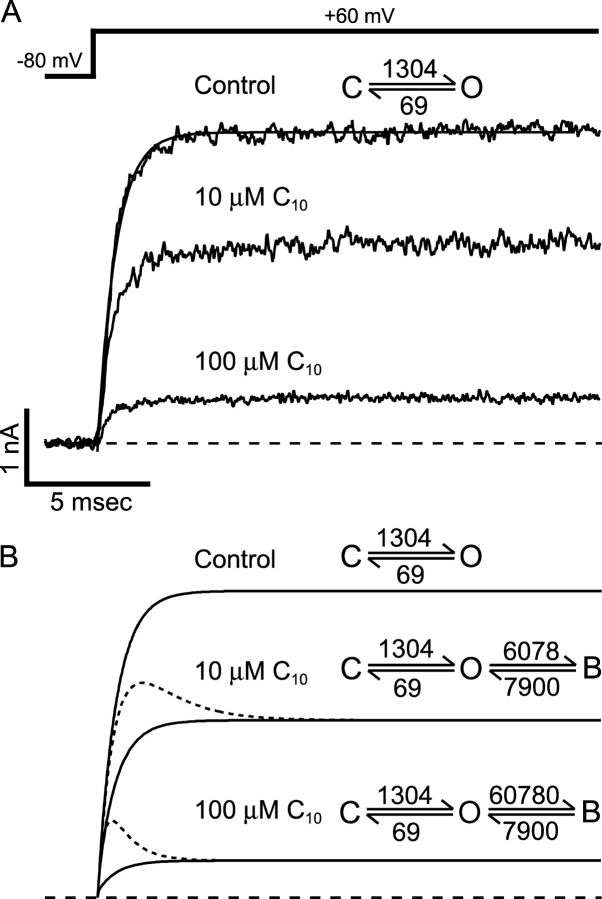Figure 4.
Fast kinetics can account for the lack of time dependence in C10 block of BK channels. (A) An example of macroscopic BK currents before and after the application of 10 and 100 μM C10. Currents were elicited by depolarization of membrane potential to 60 mV from −80 mV under voltage clamp. The smooth line in A is the fit of the control trace to a single exponential function I = I max (1 − exp(−(t − t 0)/τ)), where I max is the maximal current level, t 0 is the delay in the activation process (Cui et al., 1997), and τ is activation time constant. Values used for the fit are I max = 4.03 nA, t 0 = 89 μs, and τ =728 μs. If we assume a two-state activation process: C↔O with opening rate α and closing rate β, then (1/ τ) = α + β, and P o = α/(α + β). By assuming a P o of 0.95 at 60 mV we can calculate the values for the forward and backward rates: α = 1,304 s−1 and β = 69 s−1. (B) Gating parameters from A were used for the simulations of currents according to the open-channel block mechanism: C↔O↔B. Block and unblock rate constants are from mean values at 60 mV in Fig. 3 A. Parameters used in the simulations are shown on the top of each trace (solid lines). 10 times the on rate is used in the simulation of 100 μM C10. Dotted lines are simulations when both the block and unblock rates are decreased by 20-fold with the C↔O gating parameters remaining unchanged.

